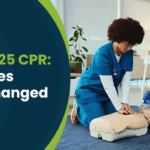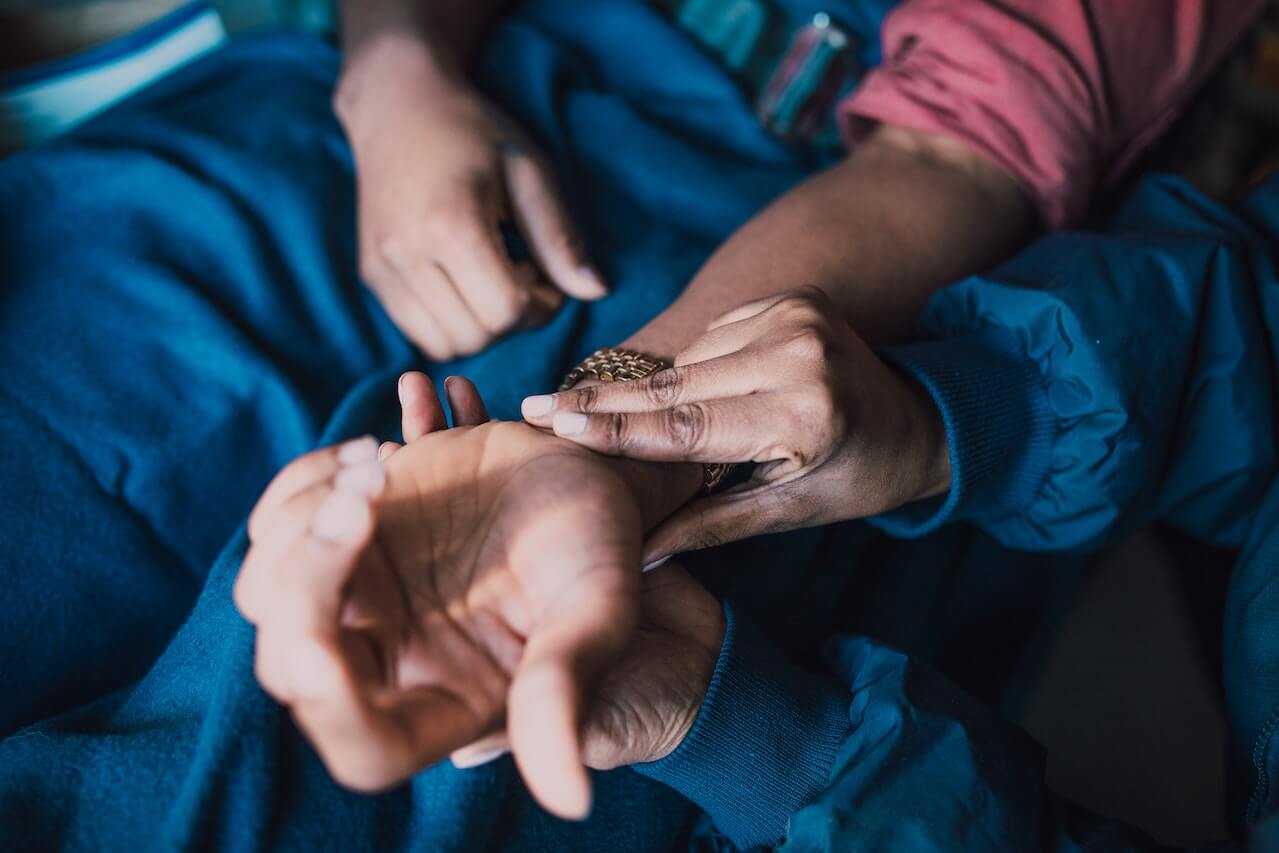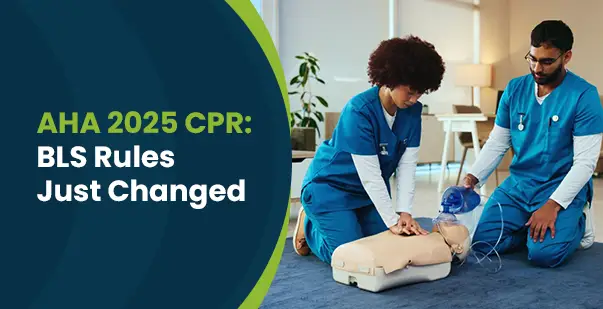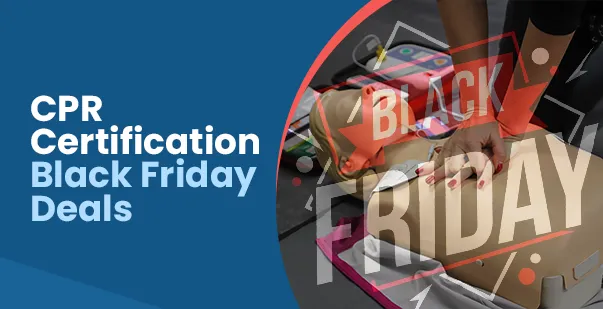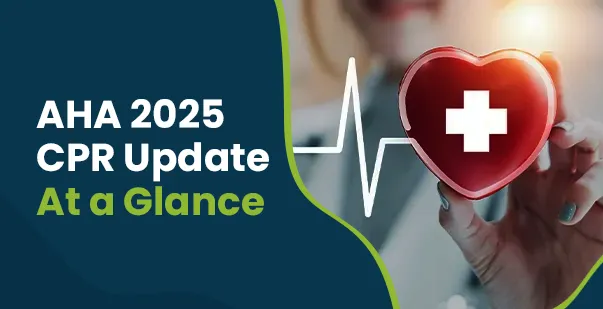Cardiac emergencies can happen anytime, anywhere, and knowing how to respond quickly can mean the difference between life and death. Shockingly, Each year, more than 350,000 cardiac arrests occur outside of hospitals in the U.S. alone.
One of the most effective life-saving techniques in these situations is Cardiopulmonary Resuscitation (CPR). CPR is a critical first-aid skill that helps keep blood flowing to the brain and other vital organs when the heart stops beating. Immediate CPR can double or triple the chances of survival after cardiac arrest. However, survival to hospital discharge after EMS-treated cardiac arrest is around 10%.
An essential part of CPR is checking the pulse. This step helps determine whether the heart is still pumping blood. If you can’t feel a pulse, it means the heart isn’t working effectively, and immediate chest compressions are needed to help maintain circulation. Pulse checking is crucial because it guides the next steps in CPR, ensuring that you’re providing the right care at the right time.
In this article, we’ll walk you through the correct way to check a pulse during CPR, covering essential points like where to find the pulse, how to feel for it, and what to do depending on what you find.
The Role of Pulse Check in CPR
The significance of a pulse check in CPR (Cardiopulmonary Resuscitation) cannot be overstated. It is a critical step in assessing whether the heart is effectively pumping blood.
During CPR, rescuers must determine if there is a pulse to decide whether to continue chest compressions or switch to other life-saving measures. Knowing how to check pulse accurately is essential, as it helps in making timely and appropriate decisions, ultimately increasing the chances of survival for the patient.
To check the pulse, rescuers usually use the carotid artery in adults and the brachial artery in infants. They place two fingers on the artery and feel for a pulse for about 5-10 seconds.
If they can’t find a pulse, it means the heart isn’t beating properly, and CPR should be started right away. We will discuss it briefly later in the article.
But in nutshell, checking the pulse correctly helps ensure that CPR is done properly, giving the patient the best chance of recovery.
Identifying Key Pulse Points
During CPR, it is important to know where to find a pulse because this helps in immediate finding out if the heart is active. Among adults and children, the best areas of checking are carotid arteries while among infants, this area happens to be brachial arteries.
1. Carotid Artery (Adults and Children)
The carotid artery is in the neck, making it the primary spot to check for a pulse in adults and children. This artery is a major blood vessel supplying blood to the brain, so it’s usually easy to detect.
To check your carotid pulse, place your pointer and middle fingers on the side of your windpipe, just below the jawbone. You should feel a pulsing sensation, which is your heartbeat. Press gently to avoid obstructing blood flow. Once you locate the pulse, count the beats for 15 seconds and then multiply that number by 4 to calculate your heart rate in beats per minute (bpm).
This method is commonly used because the carotid artery is large and close to the surface, making it easy to find and providing a strong, reliable pulse.
2. Brachial Artery (Infants)
For infants, the brachial artery, located on the inside of the upper arm, is the most reliable place to check for a pulse.
To check your brachial pulse, place your index and middle fingers along the inside of your arm, between the crook of your elbow and the pointy part of your elbow bone. You should feel a pulsing sensation, which is your heartbeat. Press gently to avoid obstructing blood flow. Once you locate the pulse, count the beats for 15 seconds and then multiply that number by 4 to determine your heart rate in beats per minute (bpm).
This method is particularly useful for checking the pulse in young children and infants, as the brachial artery is more accessible in their smaller arms.
3. Radial Pulse
A radial pulse is the pulse felt in the radial artery in the wrist, on the thumb side of the inner forearm.
To check your radial pulse, place your pointer and middle fingers on the inside of your opposite wrist, just below the thumb. You should feel a pulsing sensation, which is your heartbeat. Press lightly to avoid obstructing blood flow.
Once you locate the pulse, count the beats for 15 seconds and then multiply that number by 4 to calculate your heart rate in beats per minute (bpm).
This method is commonly used because it’s easy to access and provides a reliable measure of your heart rate.
4. Pedal Pulse
A pedal pulse, also known as the dorsalis pedis artery, is a pulse point on the foot that is used to assess peripheral circulation. The dorsalis pedis artery runs from the ankle joint to the first intermetatarsal space, which is between the big toe and second toe.
To check your pedal pulse, place your index and middle fingers on the top of your foot, just above the highest point of the bone that runs along the top. You should feel a pulsing sensation, which indicates your heartbeat. Press gently to avoid obstructing blood flow. Once you locate the pulse, count the beats for 15 seconds and then multiply that number by 4 to determine your heart rate in beats per minute (bpm).
This method is useful for assessing circulation in the lower extremities and can be particularly helpful for individuals with conditions affecting blood flow to the feet.
5. Checking an Assistive Device
There are several ways to check your heart rate, including:
- At-home blood pressure monitors
- Digital fitness trackers
- Smartphone apps
- Exercise machines
The most accurate way to monitor your heart rate is by using a wireless chest strap monitor, which sends the data to a fitness tracker on your wrist.
While wrist-worn fitness trackers, blood pressure monitors, and smartphone apps are slightly less accurate than checking your heart rate manually, they are still reliable and very helpful during exercise.
Exercise machines often have metal hand grips that can measure your heart rate, but these tend to be less accurate. For the best results while exercising, it’s better to check your heart rate manually or use a fitness tracker.
What Should Your Heart Rate Be?
When performing CPR, aim for 100 to 120 chest compressions per minute. This helps keep blood flowing to vital organs during cardiac arrest.
Make sure to press down at least 2 inches (5 cm) deep for adults, and let the chest fully rise between each compression.
In normal situations, heart rate norms are mainly determined by age, not gender, although men usually have slightly lower heart rates than women. A healthy resting heart rate for adults is between 60 and 100 beats per minute (bpm). However, very fit people, like athletes, might have resting heart rates below 60 bpm.
Target heart rates are useful for getting the most out of your workouts while staying safe. Exercising at 60 to 85 percent of your maximum heart rate is generally most effective.
If you want to burn fat, aim for the lower end of this range or try interval training, where your heart rate goes up and down. For improving cardiovascular strength, aim for the higher end.
To estimate your maximum heart rate, subtract your age from 220. For example, if you’re 45 years old, your estimated maximum heart rate is 175 bpm (220 – 45 = 175).
Once you know your maximum heart rate, you can figure out your target heart rate for exercise.
Learn CPR. Save Lives. Get Certified Online.
Master essential CPR techniques and get certified today.
How to Check Pulse in CPR
Checking the pulse is an important step in CPR to determine if the heart is still beating. Here’s how you can do it:
- Locate the Carotid Artery: Place your index and middle fingers on the side of the person’s neck, just beside the trachea (windpipe). This is where the carotid artery is located.
- Feel for a Pulse: Gently press your fingers into the groove between the trachea and the neck muscles. Be sure to use your fingers, not your thumb, as your thumb has its own pulse.
- Check for 5-10 Seconds: Feel for at least 5 seconds but no more than 10 seconds. If you don’t feel a pulse, or if you’re unsure, start CPR immediately.
For infants, you should check the brachial artery, which is located on the inside of the upper arm, between the elbow and shoulder.
What to Do After Checking the Pulse
After checking the pulse during CPR, your next steps depend on whether you detected a pulse or not:
If a Pulse is Detected
If you find a pulse, it indicates that the heart is still pumping blood. However, you still need to assess the person’s breathing. If they are not breathing or their breathing is abnormal (such as gasping), begin providing rescue breaths.
Give one breath every 5-6 seconds for an adult, and every 3-5 seconds for a child or infant. Continue to monitor the pulse and breathing closely.
If the pulse remains stable but breathing does not resume, keep giving rescue breaths and recheck the pulse every two minutes.
If No Pulse is Detected
If you cannot detect a pulse within 10 seconds, this is a sign that the heart may have stopped. In this case, immediately begin chest compressions to help circulate blood to the brain and other vital organs.
Continue performing CPR by alternating between 30 compressions and 2 rescue breaths until emergency medical help arrives or the person shows signs of life, such as movement or breathing.
Common Mistakes to Avoid When Checking Pulse
1. Not Calling Emergency Services Immediately
One of the biggest mistakes you can make in an emergency is not calling for help right away if you find an unresponsive adult.
Reports show that for every minute without CPR and defibrillation, a person’s chance of survival drops by 7-10%. As soon as you find someone who is unresponsive and not breathing normally, call 911 or emergency services immediately.
Don’t spend time checking for a pulse—if they are unresponsive, it’s best to start CPR right away and call for help. While waiting for emergency responders, begin chest compressions and rescue breaths to give the person the best chance of survival.
2. Not Starting Compressions Immediately
According to guidelines, you should start high-quality chest compressions right away to the beat of “Stayin’ Alive,” aiming for 100-120 compressions per minute if you find the person unresponsive.
Some people make the mistake of checking for breathing or a pulse for too long before starting CPR. Instead, you should begin chest compressions immediately.
This is crucial because the heart needs continuous compressions to pump oxygen-rich blood to the brain and other vital organs.
3. Performing Ineffective Chest Compressions
When giving chest compressions during CPR, it’s crucial to push hard and fast in the center of the chest. Common mistakes to avoid include pressing too lightly, compressing too slowly, or not letting the chest fully rise between compressions.
Aim to press down at least 2 inches deep and at a rate of 100-120 compressions per minute. Place your hands correctly on the lower half of the chest, between the nipples.
Using the right technique helps pump blood effectively and increases the chances of saving a life.
4. Not Providing Rescue Breaths
If you’re trained and comfortable giving mouth-to-mouth breaths during CPR for an adult, don’t skip this important step. Rescue breaths help by delivering oxygen to the lungs, which is crucial for the victim’s recovery.
However, the most important part of CPR is continuing chest compressions. If you’re not sure about giving breaths, it’s perfectly fine to do hands-only CPR, focusing on continuous chest compressions until emergency services arrive.
Sometimes, these compressions alone can help restart the heart, depending on what caused the cardiac arrest. However, if you are unfortunately not trained, you can opt for an Online CPR Certification course.
5. Inaccurate Finger Placement
When checking for a pulse, it’s crucial to place your fingers in the right spot.
For example, if you’re checking the carotid pulse on an adult, place your index and middle fingers on the side of the neck, just below the jawline. If you place your fingers too high or too low, you might miss the pulse.
Correct placement ensures you can accurately feel the pulse and decide if chest compressions are needed.
6. Not Checking Both Sides
When checking for a pulse in the neck, it’s important to check both sides. For instance, place your fingers on one side of the neck to feel the carotid pulse.
If you don’t find it, you might miss it due to its location or weakness. Checking the other side helps ensure you don’t overlook the pulse.
This step is crucial because if the pulse is faint or irregular, it could still indicate the need for chest compressions.
7. Ignoring Pulse Quality
Just finding a pulse isn’t enough; you need to check how strong and steady it is. A pulse that’s weak or irregular might not be enough to keep blood flowing properly.
If the pulse is very weak or doesn’t follow a regular rhythm, it means the heart isn’t working well, and chest compressions might still be needed.
This step helps ensure that you provide the right care—if the pulse isn’t strong and steady, continue with CPR to help maintain blood flow and support the person’s recovery.
8. Skipping Pulse Check
In stressful emergencies, it might be tempting to skip checking the pulse to start chest compressions right away.
However, checking for a pulse is important because it helps you decide if the heart is beating or if you need to begin compressions. Skipping this step can lead to unnecessary or incorrect actions, which might delay proper care.
Even under pressure, it’s essential to perform the pulse check correctly to ensure you’re following the right CPR procedure and giving the person the best chance of survival.
Get CPR Certified and Save Lives
In a cardiac emergency, knowing how to check for a pulse is crucial during CPR. This step helps decide if chest compressions are needed to keep blood flowing. To check the pulse, place your fingers on the neck for adults and children, or on the inside of the upper arm for infants. Press gently to feel the pulse. If you find a pulse, keep monitoring and give rescue breaths if needed. If there is no pulse, start chest compressions right away. Learning the right technique ensures you can act quickly and effectively to help someone in need.
